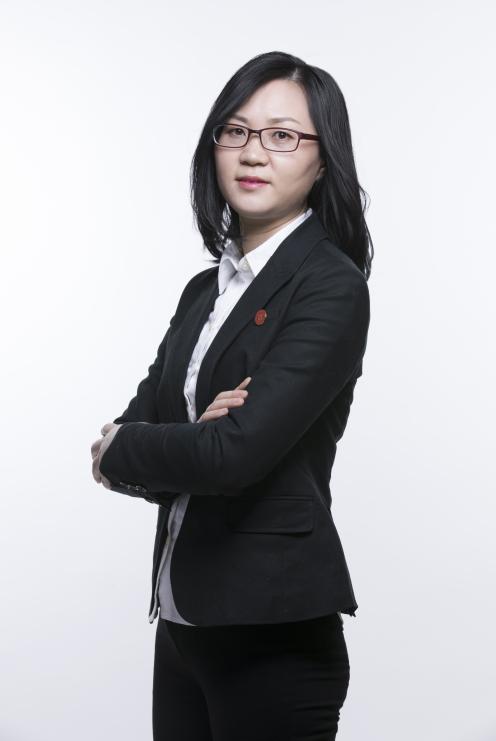
谢燕
职务:上海中医大学公共健康学院健康营养研究室主任
研究领域:中药制剂新技术研究与应用。主要研究方向:⑴中药肠吸收机制与剂型设计;⑵中药活性成分抗耐药肿瘤机制及其靶向递送;⑶中药新药及功能食品研究与开发。
个人简介:谢燕(1978-),女,博士、研究员(三级),博士研究生导师。上海中医药大学学术荣誉体系特聘教授。上海市中医药新兴交叉学科“中医药营养学”学科带头人。上海市东方英才(拔尖)、上海市青年优秀学术带头人、上海市卫生健康学科带头人、上海市曙光学者、上海市浦江学者、上海市青年科技启明星。兼任世界中医药学会联合会中药制剂专业委员会常务理事、中国民族医药学会方药量效研究分会常务理事、中华中医药学会中药制剂分会委员、上海市药学会中药专业委员会委员、上海市药学会药剂专业委会委员、上海市中医药学会药膳分会委员,国家自然科学基金评审专家,上海市科学技术委员会评审专家库成员。《现代药物与临床》杂志编委;International Journal of Pharmaceutics、Carbohydrate Polymers、Molecular Nutrition and Food Research等多家SCI期刊特邀审稿人。2014~2015年,于美国康奈尔大学医学院梅赛德斯医院研究所访问学习一年。
作为第一负责人主持国家自然基金、上海市中药现代化专项、上海市卫计委中发办中医药新型交叉学科建设项目等各级别项目十余项,并获上海市人才发展资金资助。迄今发表论文117篇,其中SCI收录50篇,以第一作者(或通讯作者)发表论文103篇,其中SCI收录48篇,全部论文在SCI被引用2196次(他引),SCI高被引论文一篇;申请国家发明专利12项,获授权9项。以第一完成人领衔完成的项目“含黄酮类活性成分中药新型给药系统研究与推广应用”获2018年上海市科技进步二等奖、2018年中华医学会科技进步三等奖、2018年中国中西医结合学会科技进步三等奖、2017年度浦东新区科技进步一等奖;另以第3(4)完成人获上海市科技进步二等奖等省部级奖项3项、获上海中医药科技二等奖等局级奖项5项,并获2012年明治生命科学奖。指导47名中药学、药学、营养学专业本科生的毕业课题设计(以毕业计);独立、联合指导中药学硕博士研究生39名(以毕业计),获研究生国家奖学金10人次,上海市优秀毕业生2人次。参与并完成了中药新药祛膜颗粒、参葛颗粒、地黄益智颗粒、软坚清脉颗粒、仙茜颗粒、芪术颗粒、宽心片等的药学研究开发工作,获得临床研究批文3项。
十篇代表性论文(*为通讯作者)
1. Tao C, Luo F, Wang Y, Gao X, Cao Y, Wang K, Xie Y*. Mannose-modified Prunus persica kernel protein nanoparticles loading baicalin coated with Lycium barbarum polysaccharide for ulcerative colitis treatment. Carbohydr Polym, 2026, 371, 124489. (IF=12.5)
2. Guo Y#, Yang X#, Zhang Y, Luo F, Yang J, Zhang X, Mi J, Xie Y*. Hyaluronic acid/dextran-based polymeric micelles co-delivering ursolic acid and doxorubicin to mitochondria for potentiating chemotherapy in MDR cancer. Carbohydr Polym, 2024, 332, 121897. (IF=11.2)
3. Yang T, Xiao Y, Liu S, Luo F, Tang D, Yu Y, Xie Y*. Isorhamnetin induces cell cycle arrest and apoptosis by triggering DNA damage and regulating the AMPK/mTOR/p70S6K signaling pathway in doxorubicin-resistant breast cancer. Phytomedicine, 2023, 114, 154780. (IF=7.9)
4. Tang D, Ye T, Chen X, Yang J*, Xie Y*. Transepithelial transport characteristics of hydroxysafflor yellow A across cellular monolayers and the effects of the influx and efflux transporters. Food Biosci, 2023, 55, 103037. (IF=5.2)
5. Luo F#, Zhao J#, Liu S, Xue Y, Tang D, Yang J, Mei Y, Li G*, Xie Y*. Ursolic acid augments the chemosensitivity of drug-resistant breast cancer cells to doxorubicin by AMPK-mediated mitochondrial dysfunction. Biochem Pharmacol, 2022, 205, 115278. (IF=6.1)
6. Yang X, Xie Y*. Recent advances in polymeric core-shell nanocarriers for targeted delivery of chemotherapeutic drugs. Int J Pharm, 2021, 608, 121094. (IF=6.510)
7. Sang Z, Qian J, Han J, Deng X, Shen J, Li G*, Xie Y*. Comparison of three water-soluble polyphosphate tripolyphosphate, phytic acid, and sodium hexametaphosphate as crosslinking agents in chitosan nanoparticle formulation. Carbohydr Polym, 2020, 230, 115577. (IF=9.381)
8. Liu S#, Li R#, Qian J, Sun J, Shen J, Xie Y*. The combination therapy of doxorubicin and quercetin on multidrug resistant breast cancer and their sequential delivery by reduction-sensitive hyaluronic acid-based conjugate/D-tocopheryl polyethylene glycol 1000 succinate mixed micelles. Mol Pharm, 2020, 17, 1415-1427. (IF=4.939)
9. Ren S#, Liu M#, Hong C, Li G, Sun J, Wang J, Zhang L, Xie Y*. The effects of pH, surfactant, ion concentration, coformer, and molecular arrangement on the solubility behavior of myricetincocrystals. Acta Pharm Sin B, 2019, 9(1): 59-73. (IF=7.097)
10. Li L#, Fu Q#, Xia M, Xin L, Shen H, Li G, Ji G, Meng Q, Xie Y*. Inhibition of P-glycoprotein mediated efflux in Caco-2 cells by phytic acid. J Agric Food Chem, 2018, 66:988-998. (IF= 3.571)
